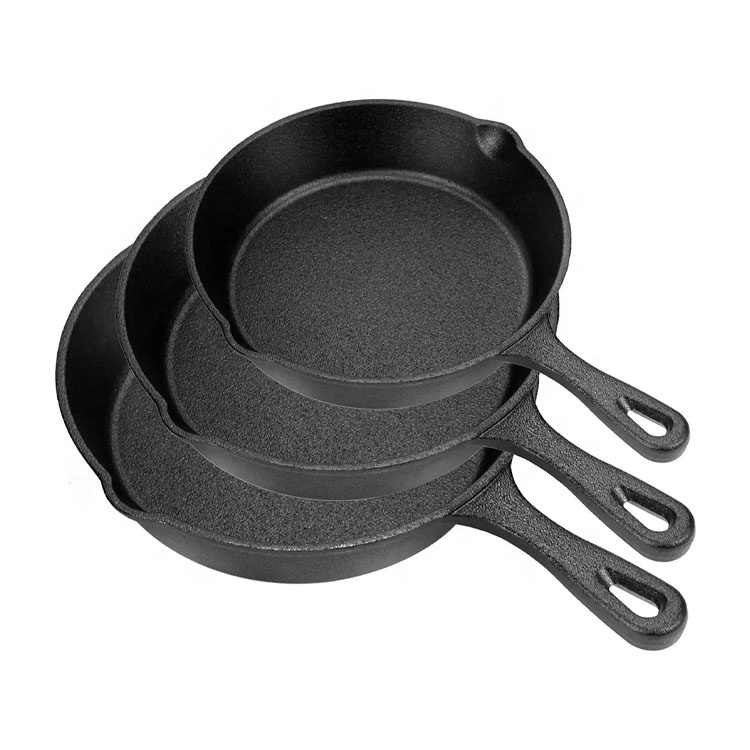
cast iron vs frying pan
Cast Iron vs. Frying Pan A Comprehensive Comparison
When it comes to cooking, choosing the right type of cookware can significantly impact both your culinary results and your overall kitchen experience. Among the wide array of options available, cast iron and traditional frying pans (often made from materials like aluminum or stainless steel) stand out as two popular choices. Each has its own unique advantages and disadvantages that can influence your decision based on your cooking style, preferences, and requirements.
Durability and Longevity
One of the most compelling reasons to choose cast iron cookware is its remarkable durability. With proper care, a cast iron skillet can last for generations, often becoming a family heirloom. Its thick, dense material can withstand high temperatures and is resistant to warping, making it suitable for a variety of cooking methods including stovetop, oven, and even outdoor grilling. In contrast, traditional frying pans, especially those made from non-stick materials, may have a shorter lifespan. Non-stick coatings can scratch and degrade over time, requiring replacement sooner than solid cast iron pieces.
Heat Retention and Distribution
Cast iron skillets are legendary for their heat retention and distribution. Once heated, they maintain their temperature exceptionally well, which is ideal for searing meats or frying foods evenly. This characteristic enables noteworthy caramelization and browning—a vital aspect of many recipes. Traditional frying pans, while good at quickly heating up, may struggle with maintaining consistent heat across their surfaces, particularly if they are thin or made from metal that does not conduct heat evenly.
Versatility in Cooking
cast iron vs frying pan

Both cast iron and frying pans offer versatility, but they excel in different areas. Cast iron can be used for a range of cooking methods, including baking, sautéing, frying, and even roasting. It’s the go-to choice for dishes that require going from stovetop to oven. On the other hand, traditional frying pans are often lighter and easier to handle, making them a favorite for everyday tasks like frying eggs or making pancakes.
Weight and Handling
While cast iron’s heft is an advantage in terms of heat retention, it can also be a drawback. Cast iron skillets are heavy, which may pose a challenge for some users when lifting or maneuvering them. Traditional frying pans, especially those made from lighter materials, are typically much easier to handle, which can be particularly beneficial for tasks that require frequent stirring or flipping.
Maintenance and Care
Caring for cast iron requires a bit more effort compared to traditional frying pans. Cast iron needs to be seasoned regularly to maintain its non-stick surface and prevent rusting, which can intimidate some cooks. Traditional frying pans, particularly non-stick varieties, are often easier to clean and maintain, although they do require careful handling to avoid damaging the coating.
Conclusion
In the end, the choice between cast iron and a traditional frying pan largely depends on your personal cooking style and needs. If you value durability, excellent heat retention, and versatility, investing in a cast iron skillet might be the right choice for you. However, if you prefer lightweight cookware that is easy to handle and maintain, a traditional frying pan could be more suitable. Consider both options carefully, and you may find that having both in your kitchen can provide the best of both worlds, allowing you to tackle a wide array of recipes with confidence and efficiency.
-
Season Cast Iron Perfectly with GPT-4 Turbo TipsNewsAug.01,2025
-
High Quality Cast Iron Cookware - Baixiang County Zhongda MachineryNewsAug.01,2025
-
Premium Cast Iron Pan: Durable & Perfect HeatNewsAug.01,2025
-
High Quality Kitchen Durable Black Round Cast Iron Cookware Pancake Crepe Pan-Baixiang County Zhongda Machinery Manufacturing Co., Ltd.NewsAug.01,2025
-
Cast Iron Cookware - Baixiang County Zhongda Machinery | Nonstick, Heat ResistanceNewsAug.01,2025
-
High Quality Kitchen Durable Black Round Cast Iron Cookware - Baixiang County Zhongda Machinery | Non-Stick, Heat Retention, DurableNewsJul.31,2025


